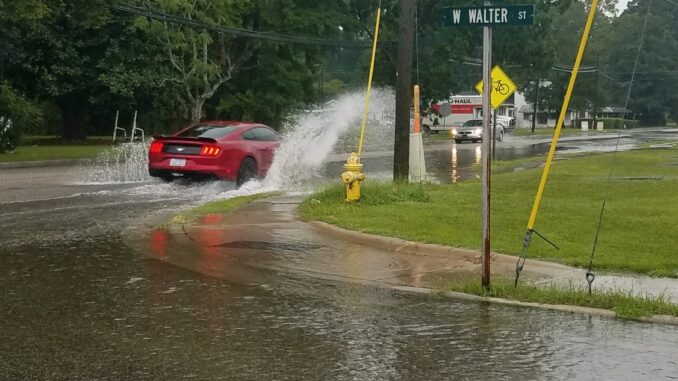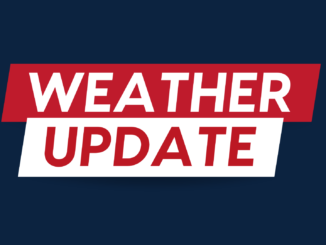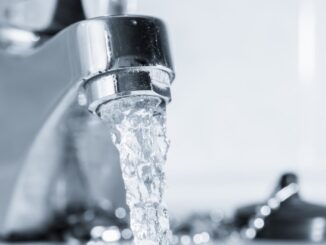
Note: this commentary is a partial transcript from the Columbus Connection with Managing Editor Jefferson Weaver. The Connection is broadcast every Saturday at 10 a.m. on WTXY and is available on Spotify.
There’s an old story about how a particularly vicious barn cat was wiping out the mouse population. One day, the mice gathered for a meeting to talk about what could be done.
After sharing stories of lost family members, and fears for the future, they began discussing options. They blamed previous mice for not developing better warning systems, the dog for not chasing the cat enough, the farmer for concentrating feed in a place where the mice could congregate. In reality, they realized there was no way to place the blame on anyone. Cats are cats, and they will chase mice. It wasn’t anybody’s fault – it was nature.
The consensus was that because the cat was sneaky, mice didn’t have time to hide before he could pounce. If they could have sufficient warning, then they could run and hide. It was agreed that tying a bell to the cat’s collar was the way to go. Everyone clapped and cheered – they had a solution. Now everybody could be safe.
Then a wise old grandpa mouse in the corner cleared his throat and asked an important question – who was going to bell the cat?
Twice this year, we had significant rain events in Columbus County – first the remains of Hurricane Idalia on the Labor Day weekend, then a coastal low that brought us six inches of rain a few weeks back. There was also a pretty rousing almost-flood in July.
Everybody agrees that something needs to be done about flooding problems in both the county and the municipalities, but no one seems to want to bell that cat.
There is simply not enough ‘free” money to fix the problems in Columbus County. Period. And the fix is not an easy one.
Numbers have been thrown around for years, big numbers about the cost of improving drainage across Columbus. Most of those numbers are in the tens of millions of dollars to cover the entire drainage basin of the Waccamaw. The streams and swamps leading to Brown Marsh and the Cape Fear, as well as the tributaries of the Lumber, have their own challenges.
It’s disheartening and disingenuous to hear some elected officials claim they have the magic solution for solving all the drainage issues in Chadbourn, Whiteville or even a commissioner’s district. One option could technically solve many of the problems in Whiteville, for instance, but that would in turn dump more water into Lees and Old Dock, making things worse there. The same goes for Chadbourn. As unpopular and expensive as they are, plans are what engineers are paid for – plans to help find the solutions that do not have an unnecessarily adverse effect on folks downstream. Failure to clear the outfalls south of Whiteville will only lead to more catastrophic flooding in the city in the future, since those outfalls will eventually fill and become blocked even worse than before.
Folks in Western Prong rightfully don’t want to see hog farms flooded and 701 cut again like it was in Hurricane Florence. Folks in Chadbourn don’t want their homes damaged by people driving through three feet of water leaving wakes like skiboats. Business and homeowners in Whiteville don’t want to see downtown wiped out again. Lees Lake doesn’t deserve to flood out just because they’re downstream from Whiteville, nor do Old Dock, Crusoe and Nakina deserve to flood so the folks in lees can be dry.
Fixing the flooding problems will require serious steps that taxpayers might not be willing to take, and elected officials won’t take them without knowing the taxpayers are willing to go there. Chadbourn had a plan that was reasonable in its stormwater improvement fee, but state legislation may take that away before too long. The non-profit drainage corporations of years gone by worked to an extent, but they relied on property owners playing a part as well as paying a part. Poor oversight and politics have washed away most of those private agreements like topsoil on a straight plowed field.
Unless there’s a massive force of volunteers out there no one has heard of, drainage improvement and more importantly, maintenance, require money. Lots of it. Just a few of the moving parts of the drainage machine include clearing debris, snagging and dragging streams, knocking out and maintaining beaver dams, trapping beavers, clearing private ditches and canals, monitoring timber companies for proper disposal of tops and branches—you get the idea.
Plus, folks are going to have to cooperate with each other, both individually and as communities.
Downtown Whiteville seems to get the most press coverage when it comes to flooding. Fair Bluff’s business district was basically destroyed twice and is now in the process of rebuilding itself into a flood-resistant example of how things should be done. The Bluff has different variables than downtown Whiteville, but some could be adapted for use in the city.
Soles Swamp cuts the city in two, from west to southeast. Indeed, much of downtown was built on filled swampland, back before there were things like permits and regulations. During the drought of 2012-13, I spent some time in areas of the swamp that are usually underwater. Embedded in the dirt not far from the Madison Street bridge were pieces of sewing machines, appliances, rotten building materials, and other detritus left over from when the city dump was covered with dirt and proclaimed to be new ground for building.
That fill wasn’t as much of an issue when the streets were dirt and paved parking was a new and novel idea. Water could soak into the ground on bare streets and open lots. It would be muddy, of course, but mud dries. The water could soak into the ground while it was slowly running off into the swamp and eventually to the Waccamaw River.
Humans being what humans are, though, we adapted the environment to our needs and wants, and paved over hundreds of acres of dirt that once drank every drop of rain poured on it. That water still has to go somewhere, so we created ditches, canals and storm drains. Most of the time those manmade systems can handle the runoff, but often they cannot. That leads to flooding.
Now, I am not under any circumstances one of those tree huggers who wants to blame mankind for adapting our habitat to our needs. God calls us to be stewards, however, and in that regard we have failed.
Back during that aforementioned drought, I had an interesting conversation with a hydrologist and an engineer who suggested that the problems could be greatly reduced in downtown Whiteville by building more swamp. It’s actually a fairly simple concept: returning most if not all of the filled swamp to its natural state would create ab huge retention pond, if you will, that would capture excessive runoff and if managed properly, slow it enough to keep downstream communities from being devastated as they have been so many times.
Restoring Soules Swamp from Caldis to Frazier streets, starting beside U.S. 701, would create a waterfront that could be used as greenspace, public parks, outdoor recreation, and so much more. Along with benefiting the environment, it could create economic opportunities for the city, in terms of attracting new niche businesses and destination eco-tourists.
Outlandish? Sure. But not necessarily impossible.
A Whiteville waterfront won’t solve all the drainage problems for all the county, or even Whiteville. Clearing the blockages under Corman’s rail bed from Whiteville to the state line won’t solve all the problems for Cerro Gordo and Chadbourn. Rebuilding bridges in Crusoe and replacing those infernal, poorly installed culverts won’t solve all the problems in the southern end of the county, but it was a good start. Adopting an eminent domain policy and requiring landowners to allow clearing crews access to private property would do little more than making a bunch of money for a bunch of lawyers.
Clearing several blocks of floodprone areas in Whiteville would help. Improving drainage under the railbeds would make a difference. The bridges in Crusoe are already helping pull more water off of Lees Lake and get it downstream before it can flood more homes in all of the Old Dock community. Encouraging landowners to maintain their own ditches and drainage would benefit everyone, especially if there is some help in laying the major groundwork and finding ways to maintain those waterways later.
But all those things require money. Money from taxpayers. Money that has to be collected now and spent at a sometimes infuriatingly slow pace, and rarely in the exact place the people paying that money want.
There is no way to write a check and magically have all the water problems fixed in our county overnight. It requires leadership, engineering, planning, a little diplomacy and vision, all things that are slowly coming into place.
The problem however, is who will pay for the work? Who is going to bell the stormwater cat?























